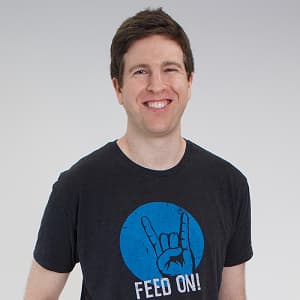
Aside from the fact that one of the words in “method actor” looks eerily similar to one of the words in “delivery method”, this won’t have anything to do with the Academy Award winning actor. However, understanding the use of your delivery method in Adwords is one of the simplest ways to drop your CPCs, and increase your ROAS.
The delivery method is exactly what it sounds like: it’s the way (method) in which Google shows (delivers) your ads to the people of the world, which is probably tens, even dozens, of people. Specifically, the method refers to the frequency in which they show up. This setting can be found within your campaign under “Settings”. Towards the bottom you’ll see “Delivery method (advanced)”.
You’ll see there are two methods available: standard and accelerated. Standard certainly looks like the best thing since Thriller because it says “(Recommended)” at the end, and you’re probably saying to yourself, “I think Google would know everything.” That’s partially true, in the same way that Blockbuster recommended buying stock in Blockbuster. Standard is recommended because it guarantees that your budget will last the entire day, which sounds super neato.
The issue is that this stretches your budget throughout the day. If you have a $100 daily budget, and your max CPC is set to $1, Google will guarantee that your $100 will last the day up to $1/click. So if you get 2 or 3 clicks in a given hour, Google will restrict your ad from showing in order to prevent your budget from running up. If you’re looking to use guerilla tactics with your shopping campaign, this is perfect for you. If you’re looking to maximize your exposure, this is less perfect for you, and “less-perfect” means pretty much exactly the same thing as “not-at-all-perfect”.
“But Travis”, you say, wondering how you knew my name, “I’m worried that accelerated is going to burn my budget up early.” Well, stranger whose name I don’t know, that’s a good thing. That means your ads are so good that you’re getting more organic exposure than you anticipated. This is a common side effect for people who are on Feedonomics. Doctors recommend reducing your bids, and checking in the morning.
So here’s the skivvy: In the Dimensions tab, change your date range to yesterday, and under “View: Day”, switch it to “View: Hour of Day” (You can find that under “Time”, along with Morris Day and that guy from that one episode of Twilight Zone). This will show you how much you spend each hour of the day. If you’re accelerated, and your budget was blown out at noon, you can lower your bids. A lot. Lower the products you don’t like more than others and leave any superstar products, your Daniel Day-Lewises, the way they are (Okay, yes, I lied about this having nothing more to do with him). The next day, look at the same report for the previous day, and see how long your budget lasted. Maybe now your budget ran out at 6. Good job! You’re like The Little Engine That Could, and you’re almost to the top. Repeat these steps until you have your budget running until the end of the day. Now, you’re paying less per click, your budget is lasting the entire day, and your ads are being shown as often as the demand requires. That’s a win-win-win-win (the fourth win is for me, by proxy, for being proud of you).
But what if you have the opposite problem? You’re using accelerated, but you’re not using your entire budget. How would reducing your bids help in any way? Well, that’s a good intuition: It won’t help. And why would you want to? You have extra money! Most made-up studies, and possibly some real ones, show that 99% of people (±1%) like extra money. Take that extra money and buy yourself something nice, like increased bids on your highest converting product groups. You’ve got money to spend, spend it on shopping! Or a DeLorean. You could buy a DeLorean. Honestly, they’re expensive, the parts are expensive, they’re really heavy by today’s standards, and they only come in one color: stainless steel, because that’s what they’re made out of. It’s wonderful for cooking eggs on the hood without them sticking, but they end up tasting like motor oil, so you’d be better off increasing your bids.

Brian Roizen is the Cofounder and Chief Architect of Feedonomics, a full-service feed optimization platform that optimizes product data for hundreds of channels. He has been featured on numerous podcasts and eCommerce webinars, and regularly contributes to Search Engine Land and other industry-leading blogs. Brian graduated summa cum laude from UCLA with both a Bachelor’s and Master’s degree in Mechanical Engineering.



